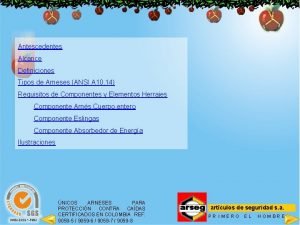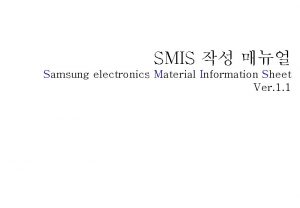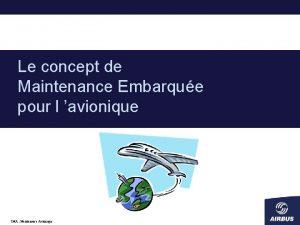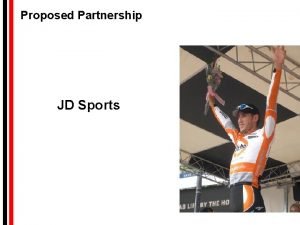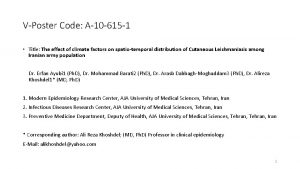VPoster Code A10 615 1 Title The effect








- Slides: 8

V-Poster Code: A-10 -615 -1 • Title: The effect of climate factors on spatio-temporal distribution of Cutaneous Leishmaniasis among Iranian army population Dr. Erfan Ayubi 1 (Ph. D), Dr. Mohammad Barati 2 (Ph. D), Dr. Arasb Dabbagh-Moghaddam 3 (Ph. D), Dr. Alireza Khoshdel 1* (MD, Ph. D) 1. Modern Epidemiology Research Center, AJA University of Medical Sciences, Tehran, Iran 2. Infectious Diseases Research Center, AJA University of Medical Sciences, Tehran, Iran 3. Preventive Medicine Department, Deputy of Health, AJA University of Medical Sciences, Tehran, Iran * Corresponding author: Ali Reza Khoshdel; (MD, Ph. D) Professor in clinical epidemiology E-Mail: alikhoshdel@yahoo. com 1

Introduction • The army population are at risk group for Cutaneous Leishmaniasis (CL) because of distinct activities that will increase the entrance into chain of infection. • There is an obvious geographical inequality for CL within Iran. • Several factors such as climate factors can determine the occurrence of CL in a given geographical area. • Describing epidemiological profile of CL among high risk groups such as army population can help reducing the burden of CL in such population. • The present study aimed to assess the spatio-temporal pattern of CL and to evaluate the effect of climate factors on the occurrence of CL can among Iranian army population during 2005 to 2014. 2

Method • The CL cases were obtained from the health deputy of AJA Military University of Medical Sciences for each province during 2005 to 2014. • Data on annually temperature, rainfall rate and wind speed of the Iran provinces were extracted from IRAN Meteorological Organization (IRIMO), a public use database. • Spatio-temporal pattern of CL and the effect on the studied climate factors on the occurrence of CL were analyzed using frequentist and Bayesian approaches. 3

Results • A total of 5725 CL cases were occurred among Iranian army population during the studied period. • The results showed that two provinces of Isfahan and Khuzestan were highly at risk areas for CL, However, several CL outbreaks have been occurred in non-endemic areas such as provinces located in west, northwestern and northeastern part of Iran. • The results of frequentist and Bayesian approaches have suggested that higher temperature, lower rainfall rate and lower wind speed can influence of the occurrence of CL among Iranian army population. 4

Discussion • This study have demonstrated the spatial disparity for CL incidence during the study period. • Previous study on the spatial pattern of CL did no consider some methodological issues such as difference in population density, spatial autocorrelation and small area estimation and the effect of climate factors have not been studied. • The observed effect of climate factors on the CL incidence in present study was in line of previous studies in general population. 5

Conclusion • The CL incidence rates had a distinct geographical pattern over study units. • The study provide evidence about relationship between climate factors and CL occurrence among Iranian army population that may be considered for prevention and educational strategies. 6

Reference • 1. Patino LH, Mendez C, Rodriguez O, Romero Y, Velandia D, Alvarado M, et al. Spatial distribution, Leishmania species and clinical traits of Cutaneous Leishmaniasis cases in the Colombian army. PLo. S neglected tropical diseases. 2017 Aug; 11(8): e 0005876. • 2. Ayubi E, Ashrafi-Asgarabad A, Safiri S, Kousha A, Baniasadi M, Augner C. Post-treatment Clinical Outcomes of Cutaneous Leishmaniosis in the Bam Area, South Eastern Iran: Analysis of over 9, 000 Cases. International journal of infectious diseases : IJID : official publication of the International Society for Infectious Diseases. 2015 May; 34: 61 -5. • 3. Karami M, Doudi M, Setorki M. Assessing epidemiology of cutaneous leishmaniasis in Isfahan, Iran. Journal of vector borne diseases. 2013 Mar; 50(1): 30 -7. Pub. Med PMID: 23703437. Epub 2013/05/25. eng. • 4. Azimi F, Shirian S, Jangjoo S, Ai A, Abbasi T. Impact of climate variability on the occurrence of cutaneous leishmaniasis in Khuzestan Province, southwestern Iran. Geospatial health. 2017 May 8; 12(1): 478. Pub. Med PMID: 28555469. Epub 2017/05/31. eng. • 5. Ramezankhani R, Sajjadi N, Nezakati Esmaeilzadeh R, Jozi SA, Shirzadi MR. Climate and environmental factors affecting the incidence of cutaneous leishmaniasis in Isfahan, Iran. Environmental science and pollution research international. 2018 Feb 9. Pub. Med PMID: 29427273. Epub 2018/02/11. eng. • 6. Pakzad R, Dabbagh-Moghaddam A, Mohebali M, Safiri S, Barati M. Spatio-temporal analysis of cutaneous leishmaniasis using geographic information system among Iranian Army Units and its comparison with the general population of Iran during 2005 -2014. Journal of parasitic diseases : official organ of the Indian Society for Parasitology. 2017 Dec; 41(4): 1114 -22. • 7. Salehi-Moghadam A, Barati M, Dabbagh. Moghadam A, Khoshdel A, Totonchian M, Noorifard M. Temporal changes and mapping Leishmaniasis in military units of IRI Army. Bimonthly Journal of Hormozgan University of Medical Sciences 2014; 18: 84 -90. • 8. Shirzadi MR, Mollalo A, Yaghoobi-Ershadi MR. Dynamic Relations between Incidence of Zoonotic Cutaneous Leishmaniasis and Climatic Factors in Golestan Province, Iran. Journal of arthropod-borne diseases. 2015 Dec; 9(2): 148 -60. Pub. Med PMID: 26623427. Pubmed Central PMCID: PMC 4662787. Epub 2015/12/02. eng. • 9. Ali-Akbarpour M, Mohammadbeigi A, Tabatabaee SH, Hatam G. Spatial analysis of eco-environmental risk factors of cutaneous leishmaniasis in Southern Iran. Journal of cutaneous and aesthetic surgery. 2012 Jan; 5(1): 30 -5. Pub. Med PMID: 22557853. Pubmed Central PMCID: PMC 3339126. Epub 2012/05/05. eng. 7

• What is already known about the subject? The a spatial inequality was found for the cutaneous leishmaniasis (CL) in general population and army population in Iran • What could be added to the current knowledge by this study? • The present study have considered spatial methodological issues in the incidence rates as well as the effect of climate factors on the spatial pattern of CL among Iranian army population 8
